Written by Scott Braden, Wilderness and Public Lands Advocate
Last month’s designation of Browns Canyon National Monument was a tremendous victory for conservation and for Coloradans. We know that conservation of our public lands is a core value; in a recent Colorado College poll, 82% of Westerners believe that it’s very important to conserve and protect natural areas for future generations. We have a deeply held belief that ties our iconic Colorado landscape very closely to our identity as Coloradans, and that translates into a care for the land that extends to protecting what we have to share with those yet to come.
 Browns Canyon was designated a national monument by President Obama using his authority under the 1906 Antiquities Act, a tool used by most American presidents since it was first wielded by Theodore Roosevelt to protect Devils Tower in Wyoming. Since that time, it has been used to protect monuments large and small, places cultural and wild, including the Grand Canyon, Grand Tetons and our own Dinosaur National Monument.
Browns Canyon was designated a national monument by President Obama using his authority under the 1906 Antiquities Act, a tool used by most American presidents since it was first wielded by Theodore Roosevelt to protect Devils Tower in Wyoming. Since that time, it has been used to protect monuments large and small, places cultural and wild, including the Grand Canyon, Grand Tetons and our own Dinosaur National Monument.
A bipartisan group of Colorado elected officials has been trying to protect Browns Canyon in Congress for over a decade, with notable attempts by former Republican Congressman Joel Hefley and former Senator Ken Salazar. Most recently former Senator Mark Udall sponsored a bill to designate Browns a national monument. Despite strong local support and great effort by these lawmakers, politics and an often dysfunctional Congress stymied these efforts. This is why, last December, Senator Michael Bennet and Governor John Hickenlooper joined Mark Udall in calling on President Obama to use his authority to get the job done. Although often controversial, use of the Antiquities Act to protect American lands is a routine and appropriate path to protection.

Congressman Doug Lamborn was quick to decry the designation of Browns, tossing out his tired talking point that there was insufficient consensus, that local voices were ignored. The truth is, over 500 people in December showed up for a public meeting in Salida to show their support, while U.S.Representative Lamborn didn’t even bother to attend.
Browns Canyon National Monument is just the latest in a string of conservation wins, driven by our Colorado ethic of caring for our wildlands and open spaces. Late last year, Congress got off it’s proverbial rear end and passed the bipartisan Hermosa Creek Watershed Protection Act. This mountain stream, near Durango, now boasts over 100,000 protected acres , including the 37,000 acre Hermosa Creek Wilderness. The victory was due in no small part to a committed grassroots-driven effort that brought stakeholders together, united in common purpose to conserve these lands for future generations.
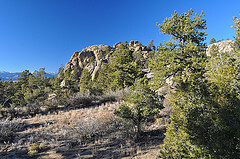 Finally, last year a legal settlement in the courts brokered protection for the summit of Northwest Colorado’s wildlife-rich Roan Plateau, drawing a protracted legal battle to a close, with all parties agreeing that the mesa top must be protected from drilling.
Finally, last year a legal settlement in the courts brokered protection for the summit of Northwest Colorado’s wildlife-rich Roan Plateau, drawing a protracted legal battle to a close, with all parties agreeing that the mesa top must be protected from drilling.
Three conservation victories, each accomplished differently. Browns through executive action, Hermosa through Congress, and Roan Plateau through our system of courts. Each is a legitimate means in service to protecting our Colorado natural legacy. Each speaks to the imagination and flexibility of the stakeholders involved to find a path forward, sometimes even when the odds weren’t good.
These conservation victories speak to a “Colorado way” of getting things done to protect our public lands treasures. They each involved listening to stakeholders and the public, collaboration, and principled compromise. But in the end, all participants involved in each process bought in to the notion that we could work together, talk together and chart the future of our forests and public lands.
Your Wilderness Advocate,
Scott Braden

 To everyone who made phone calls,
To everyone who made phone calls, 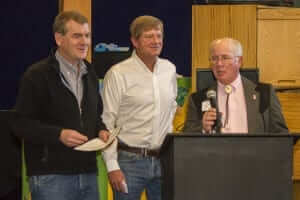 Please join us in thanking Congressman Tipton and Senator Bennet for their incredible leadership on Hermosa Creek, and stay tuned for opportunities to get out and play in the Hermosa area with us soon.
Please join us in thanking Congressman Tipton and Senator Bennet for their incredible leadership on Hermosa Creek, and stay tuned for opportunities to get out and play in the Hermosa area with us soon.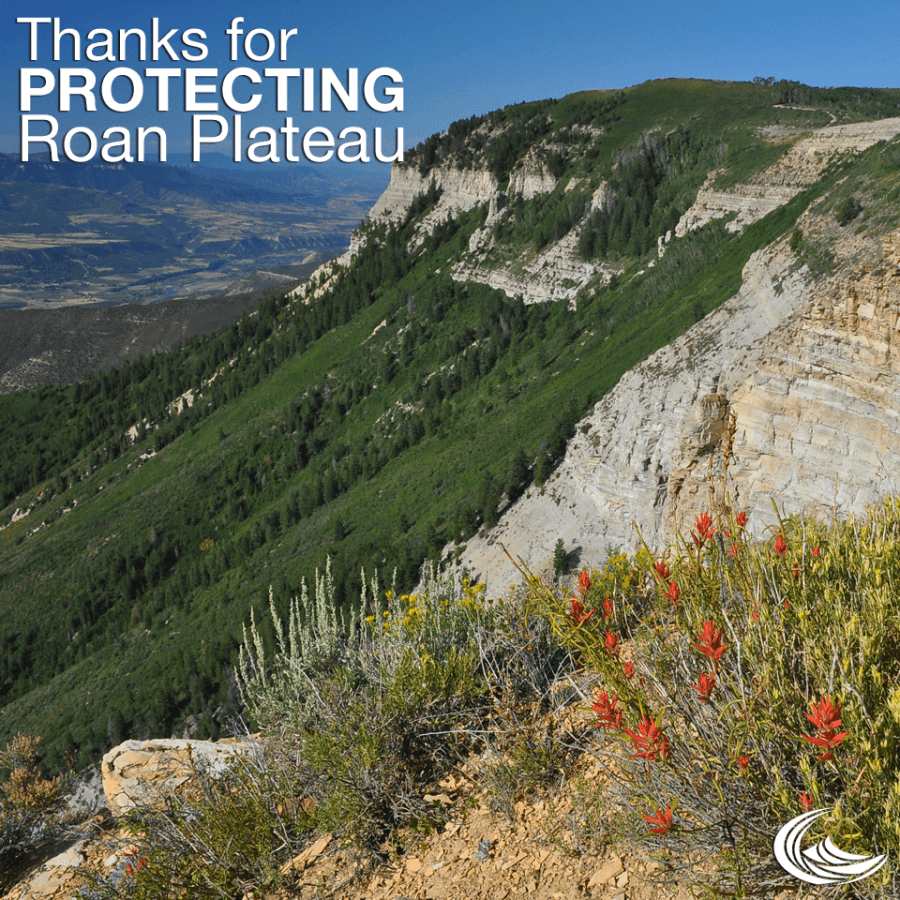 The ten year long battle to protect the Roan Plateau is finally over. The conservation community finally won the fight to keep the 54,000 acre Roan Plateau from becoming an industrial zone.
The ten year long battle to protect the Roan Plateau is finally over. The conservation community finally won the fight to keep the 54,000 acre Roan Plateau from becoming an industrial zone.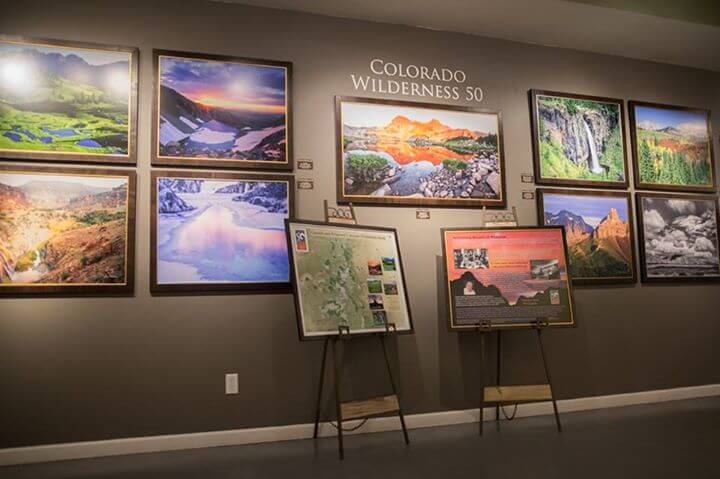 This year marked the 50th anniversary of the Wilderness Act, and boy, did we celebrate. We held events across the state from July to November to raise awareness about the 3.6 million acres of Colorado’s most sublime wildlands that are set aside as wilderness areas.
This year marked the 50th anniversary of the Wilderness Act, and boy, did we celebrate. We held events across the state from July to November to raise awareness about the 3.6 million acres of Colorado’s most sublime wildlands that are set aside as wilderness areas.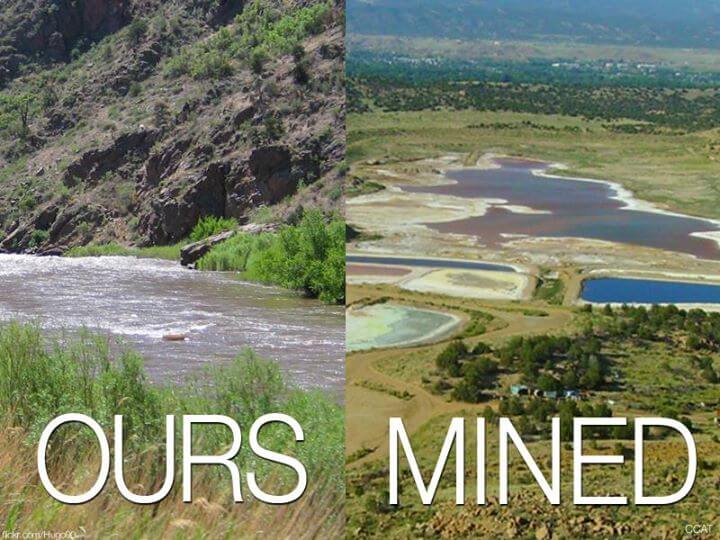 In April we were thrilled to help pass legislation that will finally clean up groundwater contamination in the Lincoln Park neighborhood of Canon City. After 30 years of pollution and indifference from Cotter Corporation, Coloradans living in its shadow were finally granted the right to clean water and use of their own water wells.
In April we were thrilled to help pass legislation that will finally clean up groundwater contamination in the Lincoln Park neighborhood of Canon City. After 30 years of pollution and indifference from Cotter Corporation, Coloradans living in its shadow were finally granted the right to clean water and use of their own water wells.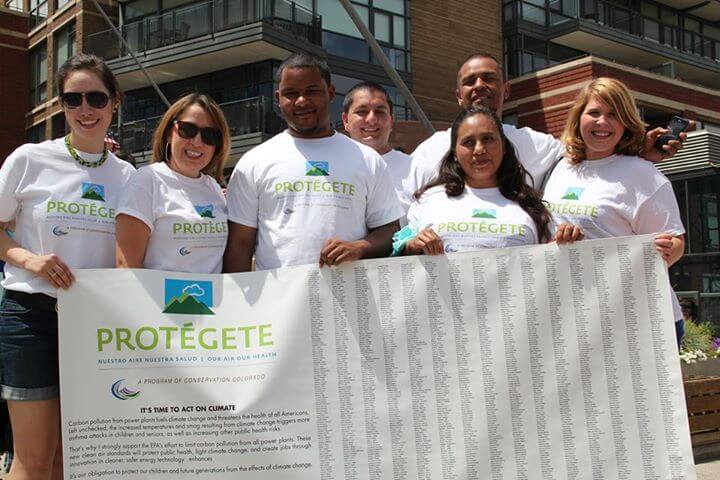 This year, Conservation Colorado launched Protégete: Our Air, Our Health. It is an important and timely effort to engage the Latino community around the issues of clean air and climate change.
This year, Conservation Colorado launched Protégete: Our Air, Our Health. It is an important and timely effort to engage the Latino community around the issues of clean air and climate change. This year we took a huge step toward addressing the challenge of climate change. The Environmental Protection Agency (EPA) proposed national safeguards that aim to cut carbon pollution, One of just four hearings across the country was held right here in Colorado! Our coalition rallied over 250 Coloradans to testify at the hearings and came out on top — an overwhelming majority of the testimonies showed support of the EPA’s Clean Power Plan.
This year we took a huge step toward addressing the challenge of climate change. The Environmental Protection Agency (EPA) proposed national safeguards that aim to cut carbon pollution, One of just four hearings across the country was held right here in Colorado! Our coalition rallied over 250 Coloradans to testify at the hearings and came out on top — an overwhelming majority of the testimonies showed support of the EPA’s Clean Power Plan.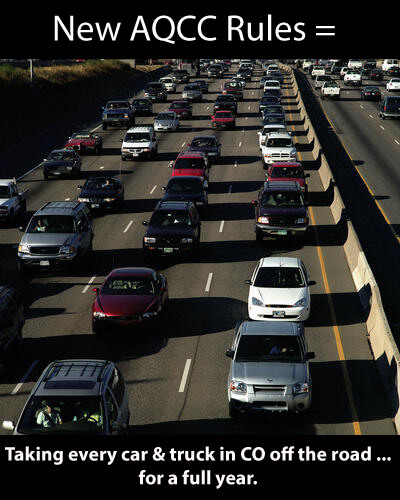 Colorado sent a strong message to the nation in February – that every person deserves to breathe clean air. With your support, and after a year-long ground campaign, Colorado’s Air Quality Control Commission passed groundbreaking, first in the nation rules that directly regulate methane pollution from oil and gas facilities.
Colorado sent a strong message to the nation in February – that every person deserves to breathe clean air. With your support, and after a year-long ground campaign, Colorado’s Air Quality Control Commission passed groundbreaking, first in the nation rules that directly regulate methane pollution from oil and gas facilities.
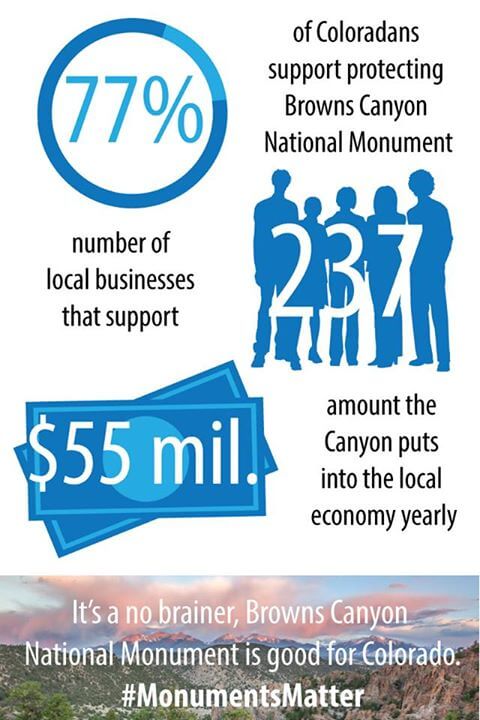 Conservation Colorado has worked with U.S. Senators Mark Udall and Michael Bennet for years to designate Browns Canyon as a national monument. This month, we brought this beautiful 22,000 acres of public lands around the Arkansas River to the forefront of President Obama’s attention and are optimistic that he will take the next step to finally protect Browns Canyon once and for all.
Conservation Colorado has worked with U.S. Senators Mark Udall and Michael Bennet for years to designate Browns Canyon as a national monument. This month, we brought this beautiful 22,000 acres of public lands around the Arkansas River to the forefront of President Obama’s attention and are optimistic that he will take the next step to finally protect Browns Canyon once and for all.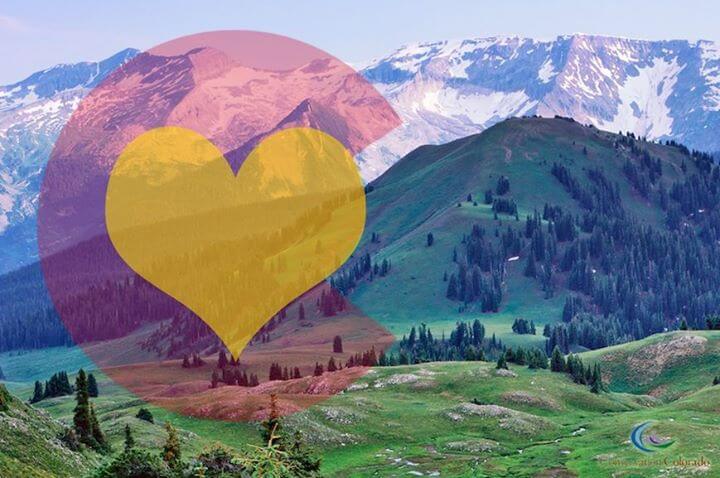 Conservation Colorado works hard to protect the land, air, and water of our beautiful state for YOU, our members. We are proud to have a growing membership of dedicated Coloradans who are willing to take action and support the work that will ensure clean air, healthy flowing waters, and protected lands for years to come. We do this work because we believe that it is your right to enjoy the outdoors as you see fit, without restrictions from out-of-state special interests and polluting industries. We do this work because of YOU.
Conservation Colorado works hard to protect the land, air, and water of our beautiful state for YOU, our members. We are proud to have a growing membership of dedicated Coloradans who are willing to take action and support the work that will ensure clean air, healthy flowing waters, and protected lands for years to come. We do this work because we believe that it is your right to enjoy the outdoors as you see fit, without restrictions from out-of-state special interests and polluting industries. We do this work because of YOU. One thing kept popping up again and again, Roan Plateau. The same verbiage of deep woods laced with streams and critter filled meadows abounded. The descriptions and pictures were amazing, truly a place for the wild things I was seeking. Streams teeming with native trout; waterfalls cascading over cliffs; lush hanging gardens soaking in the spray; aspen glades echoing the bugle of bull elk–all of these scenes accurately depict the Roan Plateau. I, of course, tried to work Roan Plateau into every available opportunity into my interview, which wasn’t terribly applicable since the job was to work on Vermillion Basin and other areas in far Northwest Colorado. A few weeks later I was packing up and moving west, eager to protect places like the Roan.
One thing kept popping up again and again, Roan Plateau. The same verbiage of deep woods laced with streams and critter filled meadows abounded. The descriptions and pictures were amazing, truly a place for the wild things I was seeking. Streams teeming with native trout; waterfalls cascading over cliffs; lush hanging gardens soaking in the spray; aspen glades echoing the bugle of bull elk–all of these scenes accurately depict the Roan Plateau. I, of course, tried to work Roan Plateau into every available opportunity into my interview, which wasn’t terribly applicable since the job was to work on Vermillion Basin and other areas in far Northwest Colorado. A few weeks later I was packing up and moving west, eager to protect places like the Roan. The efforts around the Roan Plateau have been a game changer in so many ways. While the Colorado conservation community had united against Two Forks Dam in the foothills near Denver, it hadn’t really ever made a collective stand on a public land issue and let alone a public land issue on the rural West Slope. The Roan was the rallying point for Prius-driving environmentalists from Boulder and tobacco-chewing sportsman from Meeker and everyone in between. It wasn’t simply a NIMBY reaction, it was a collective recognition that we need places like Roan Plateau to exist for our own sake.
The efforts around the Roan Plateau have been a game changer in so many ways. While the Colorado conservation community had united against Two Forks Dam in the foothills near Denver, it hadn’t really ever made a collective stand on a public land issue and let alone a public land issue on the rural West Slope. The Roan was the rallying point for Prius-driving environmentalists from Boulder and tobacco-chewing sportsman from Meeker and everyone in between. It wasn’t simply a NIMBY reaction, it was a collective recognition that we need places like Roan Plateau to exist for our own sake.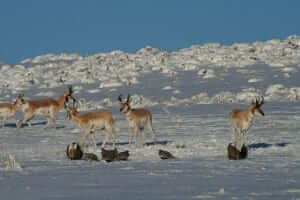
 Petrika Peters, one of our Field Organizers in Grand Junction, loves the mountains on the western slope, but the San Juans have a special place carved out in her heart. It’s where she met her partner, fell in love, got married, and spent a special week with mountain goats as the sole visitor to her camp!
Petrika Peters, one of our Field Organizers in Grand Junction, loves the mountains on the western slope, but the San Juans have a special place carved out in her heart. It’s where she met her partner, fell in love, got married, and spent a special week with mountain goats as the sole visitor to her camp!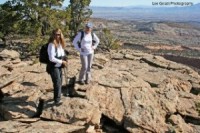 Gateway, Unaweep Canyon and The Monument. It’s a great place to see the spectacular red rock, really fun bouldering and unbeatable stargazing!
Gateway, Unaweep Canyon and The Monument. It’s a great place to see the spectacular red rock, really fun bouldering and unbeatable stargazing!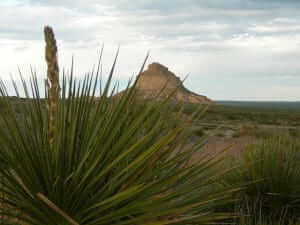 Our Denver field organizers have their favorite spots too, Becca Strelitz’s favorite place (which tends to change every time she discovers a new area of Colorado) is currently Crater Lakes in the Indian Peaks Wilderness. It is a relatively easy hike to the first of the lakes from the Moffat Tunnel and the encompass everything you’d imagine Colorado wilderness to entail.
Our Denver field organizers have their favorite spots too, Becca Strelitz’s favorite place (which tends to change every time she discovers a new area of Colorado) is currently Crater Lakes in the Indian Peaks Wilderness. It is a relatively easy hike to the first of the lakes from the Moffat Tunnel and the encompass everything you’d imagine Colorado wilderness to entail.

